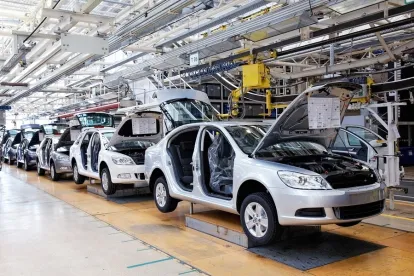Earlier this month, I attended a conference at the University of Michigan Law School: Autonomous Vehicles: Legal and Regulatory Hurdles to Deployment. It was a good excuse to go embrace all of the nostalgia that comes from visiting your alma matter. More important, the conference provided an interesting, informative, and exceedingly cordial discussion of the legal and regulatory issues presented by the emergence of automated vehicle technology.
Key Takeaways
One of the main takeaways from the conference is that many groups and industries have a significant stake in the future of autonomous vehicles. The panelists included representatives of regulators such as the National Highway Traffic Safety Administration (NHTSA) and the Michigan Department of Transportation. Manufacturers, of the traditional and non-traditional variety, such as Ford, Google, Tesla Motors, and a new startup company, Faraday Future, were represented among the panelists. Insurance company representatives from State Farm and Swiss Re were panelists, and representatives from Progressive Insurance were in attendance and engaged in the discussion.
I secretly hoped for more tension to exist during the conference’s first panel discussion, which addressed state and federal regulation of autonomous vehicles operation. In February, NHTSA issued a response to Google’s request for interpretation of the Federal Motor Vehicle Safety Standards as applied to the fully autonomous, self-driving vehicles that Google is developing and testing. NHTSA’s response expressed agreement with some of the interpretations proposed by Google—namely, that Google’s self-driving system, and not a human driver, be deemed the driver of the vehicle for purposes of the safety standards. But NHTSA declined to offer an opinion with respect to several of the interpretations requested by Google, explaining that they must be “resolved through rulemaking or other regulatory means.”
Alas, no fireworks or other explosions ensued. Thomas Lue, Corporate Counsel at Google, delivered a visionary presentation making the case that a fully autonomous vehicle requiring no human intervention is the safest design and will yield the greatest benefit for society. He and other panelists, such as Eric Williams, Senior Regulatory Counsel of Tesla, emphasized (i) the need for uniformity in regulation across states and (ii) flexible legislation.
Tim Johnson, Director of Vehicle Crash Avoidance and Electronic Controls Research at NHTSA expressed considerable agreement with the ideas and safety-related goals expressed by Google and Tesla. But he emphasized that it is difficult to apply existing safety standards to fully autonomous, self-driving vehicles, as the standards were created for vehicles designed to be driven by human drivers and that featured equipment such as a brake pedal, throttle, and steering wheel.
What’s Next
Google and other autonomous vehicle manufacturers will certainly take a keen interest in the rulemaking and other regulatory actions taken to address some of the updates that will be needed to existing vehicle safety regulations. Whether any fireworks are to come may depend largely on how quickly NHTSA, the Department of Transportation, and other regulators can move in response to the changing landscape presented by automated vehicle technology.



 />i
/>i
